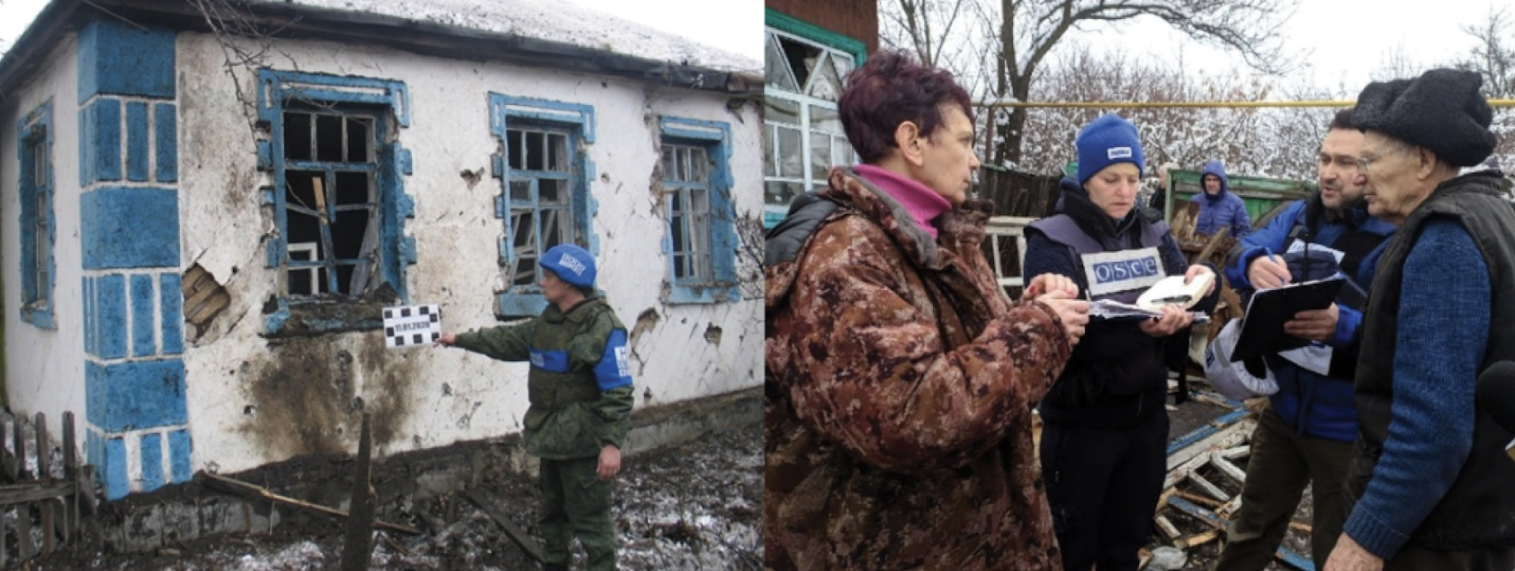The threat to civilian life five years after Minsk II
Artillery fire in Luhansk Oblast continued to take its toll on local civilians
The threat to civilian life five years after Minsk II

Artillery fire in Luhansk Oblast continued to take its toll on local civilians

The Organization for Security and Co-operation in Europe’s Special Monitoring Mission to Ukraine (OSCE SMM) reported that, on January 10, 2020, four houses in non-government-controlled Holubivka, Luhansk Oblast (also known as Kirovsk), Ukraine, were damaged by artillery shells. According to the SMM, one man sustained injuries and was taken to the hospital.

The structural damage to the houses and the injury to human life caused by these shells serve as a reminder of the high risks posed to civilians living near the line of contact who frequently become victims of indiscriminate fire. This reminder is particularly relevant now, as February 2020 marks the five-year anniversary of the Minsk II agreement, which Ukraine and Russia signed onto under the oversight of Germany, France, and the OSCE and which sought to bring about a long-term ceasefire in the Donbas region. The agreement also specifically called for parties to facilitate the provision of humanitarian relief to locals in need. Five years later, the volume of ceasefire violations has declined, but — as evidenced by these events in early January — the threats to human life persist and demand more substantive efforts to bring a long-term ceasefire.
The DFRLab was able to verify the OSCE SMM’s reporting of this event.
The shelling in Holubivka
On January 10, artillery shells struck two groups of homes located less than a kilometer (approximately half a mile) from each other at numbers 12 and 3 Zaliznychna Street and 23 and 25 Lva Tolstogo Street in east Holubivka.

The aftermath of the shelling showed windows blown out, facades ruined, and debris sitting on indoor furniture.

In one case, No. 12 Zaliznychna Street, it appears that the structure took significant damage, showing a tangle of metal and exposed wall boards from the house.

In another instance, No. 23 Lva Tolstogo, it appears that the rear of the house suffered significant damage, with images of the back yard showing a lot of debris.


No. 25 Lva Tolstogo also suffered some damage, with the windows showing the most evident damage.

The OSCE SMM monitors who visited the houses on January 11 noted shrapnel and destruction to the buildings. The SMM, regional news outlets, and the interior ministry of the so-called “Luhansk People’s Republic” (“LNR”) reported on the incident. The “foreign ministry” of the “LNR” published a statement alleging that the damage was caused by 122mm artillery fire from government-controlled town of Orikhove in Luhansk Oblast.
The SMM was not able to identify the direction the shells came from, and the DFRLab could not identify the origin of the attack through open-source means. Military positions in Ukrainian government-controlled territory, including in Orikhove as reported by the “LNR,” are within 122mm artillery range of the houses, but there is not enough information openly available to determine the origin of the attack.

Disengagement areas
These events occurred days before the announcement of new proposed disengagement areas along the front. Ukrainian and Russian representatives proposed the following new disengagement areas: Avdiivka, Novoselivka 2, Stanytsia Luhanska, Schastia, Veselohorivka, Rozsadky, Shyrokyne, and Hnutove.
https://www.google.com/maps/d/u/0/embed?mid=1tMZeagUxyC4dmBZVGrOyQSv1W3rITb-p
Discussions such as this between Ukraine and Russia are an essential component to the long and complicated task of securing a long-term ceasefire. Five years after the Minsk II agreements were signed, there continue to be ceasefire violations on both sides of the front line and, as evidenced in this case, threaten the security of local residents.
Indeed, the risk to civilian life is a point that Ukraine habitually emphasizes. In early December 2019, Ukrainian Minister of Defense Andriy Zagorodnyuk released a statement reiterating the need to disengage for the sake of addressing and alleviating the humanitarian situation, insisting that disengagement areas become humanitarian zones for facilitating crossing of the front line.
Both Russia and Ukraine proposed the Hnutove checkpoint as a possible next disengagement area, providing encouragement that a new disengagement area may soon be established on the front line.

The practical details of establishing a disengagement site, however, are complicated and, as evidenced in recent reports of fighting within the Petrivske disengagement area in Donetsk Oblast, the establishment of such an area does not necessarily offer the promise that the location will remain free from conflict.

Recurring artillery fire and scattered landmines are longstanding problems threatening civilian life along the front line in eastern Ukraine. For example, recent SMM reports identified numerous anti-tank mines in the fields around Pyshchevyk and Hnutove. The SMM also identified a man from Pankivka, Luhansk Oblast, who was injured after stepping on an explosive device while fishing in the Siverskyi Donets river. These sustained threats to civilian life make the need for disengagement and long-lasting ceasefires even clearer.
Follow along on Twitter for more in-depth analysis from our #DigitalSherlocks.

